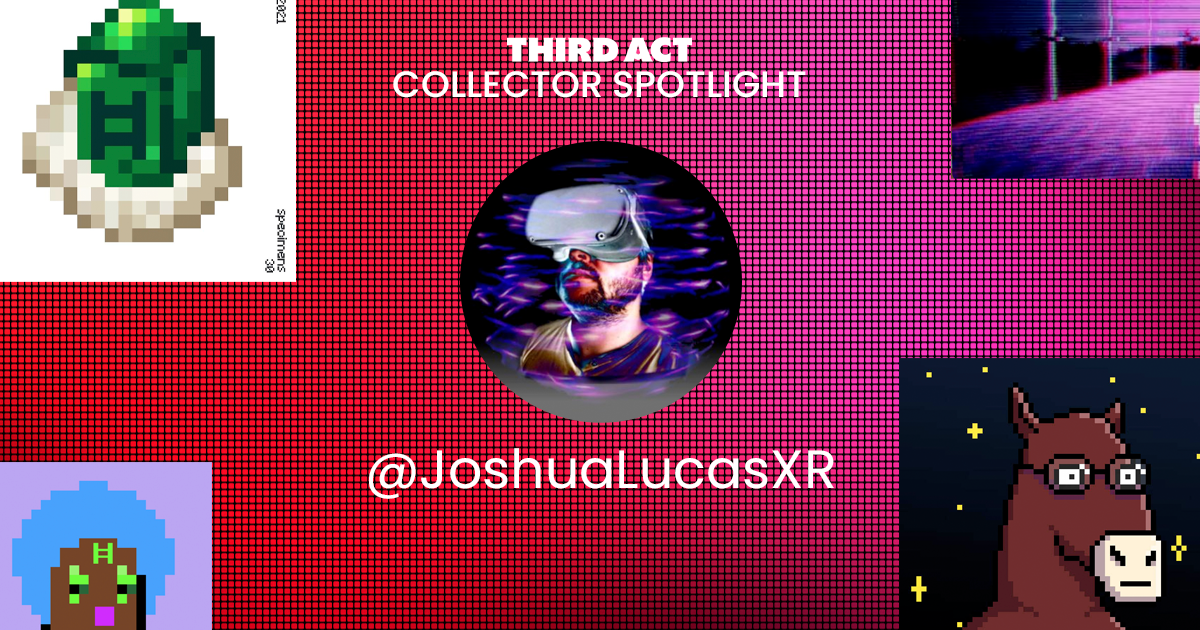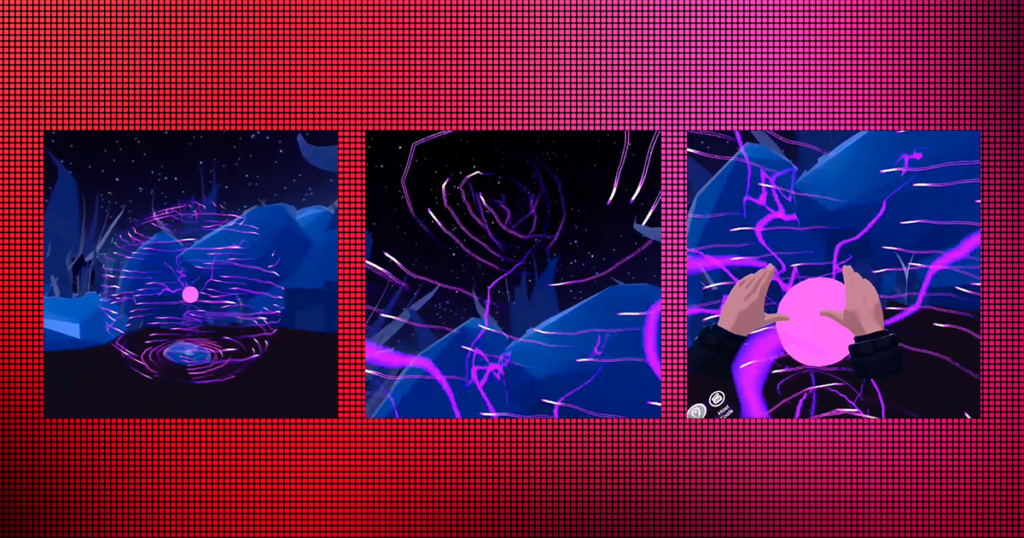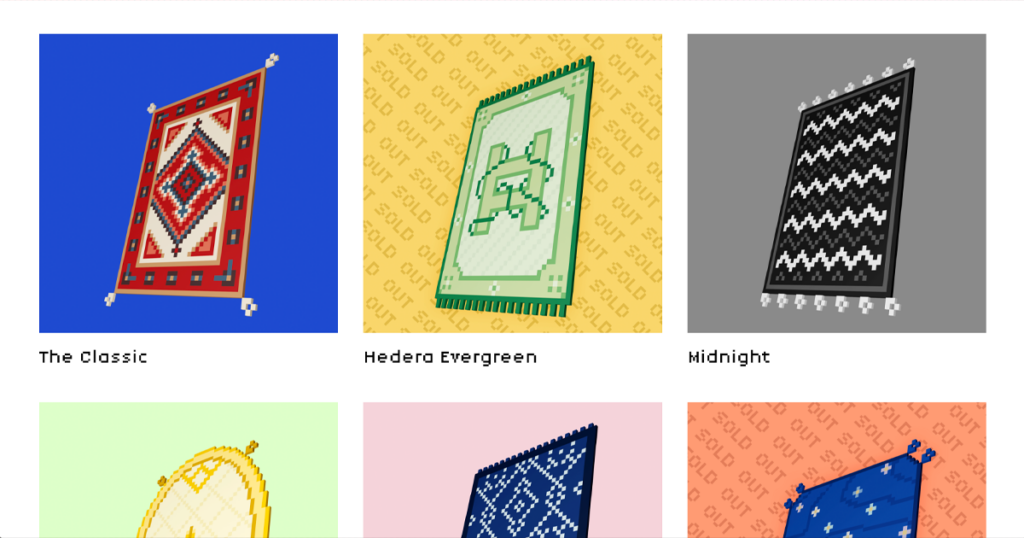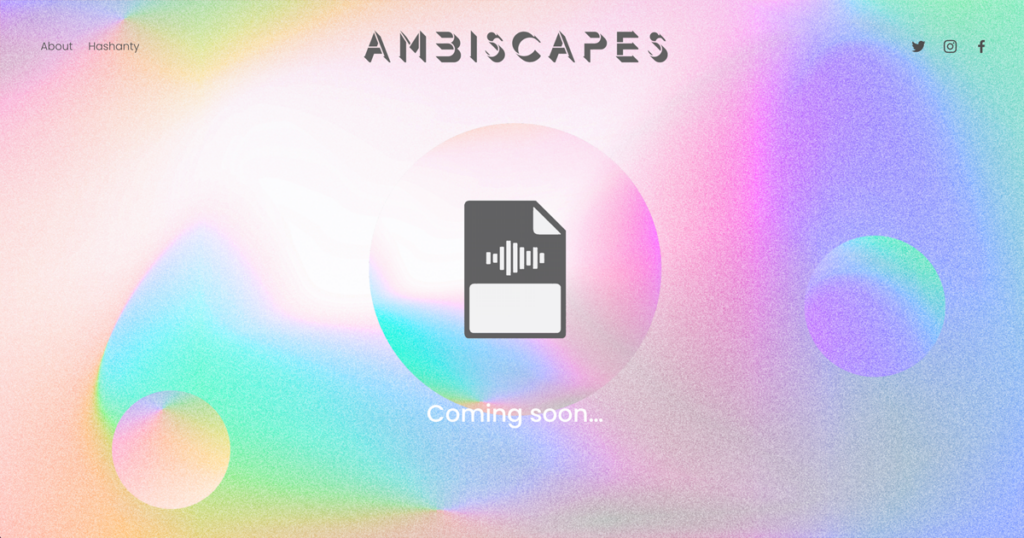
Joshua Lucas (He/Him) is a digital creative and multi-disciplinary artist working in the XR and Web3 space. He’s had a distinguished career as a composer, sound designer, visual artist, and performer. He is currently world-building in VR, and developing his own music and digital art NFT projects.
Third Act: How did you first learn about NFTs?
Josh Lucas: I began purchasing crypto on my own, and participating in conversations about Web3 as an agency owner and artist. As I got more involved with building worlds and sound designing in VR etc. I started talking to other creators who were making cool art and that’s when I was first introduced to NFTs.

TA: What was the process like of going from first hearing/learning about NFTs to jumping in and starting your collection? Were there any trepidations you had?
JL: My process for understanding NFTs started with a lot of listening, learning, and engaging with people who were already doing the things I wanted to be doing. There’s an element of trailblazing or trial and error that I think is inevitable when you’re so early to a space. Basically, I immersed myself completely for over a year to meet people, develop new skills, experiment, and participate in communities to gain as much insight as I could. Eventually, I felt confident in developing my own creations.
TA: Do you have any advice for someone looking to start their own collection?
JL: My advice is to think about who you are at your core as a creator. What do you want to bring to the world as an artist? What are you looking to express or create for people? It’s so important to be authentic when launching a collection so that when people find your project and connect with it, you’ve set yourself up to be supported in making something that is truly you and sustains your soul. Think long-term, and dream about the possibilities and experiences metaverse technologies can offer.
TA: What do you think the space will be like 5 years from now?
JL: I think that in 5 years we will see incompatibility or interoperability between platforms, applications, ledgers, etc. My hope is that exploring the metaverse will feel like a journey of shared worlds in which we can seamlessly travel [from] one experience to the next. I also think a lot of regulations surrounding data privacy and the legitimacy of projects will come into the picture. Hopefully, we will see more trust and transparency, safety, and security brought to Web3 in the future.
TA: What would you like to see more of in the NFT space? This could be anything from a wishlist of specific collections based on a film or television property, or simply just a direction you’d like to see fans and industry leaders heading in or thinking about.
JL: I want to see more people onboarded into the space as both collectors and creators. I think that the NFT space lacks diversity and could benefit from reaching wider audiences. The biggest thing for my art would be the standardization of file formats and wallet integration into certain platforms so that NFT projects can be accessed and moved no matter where I am residing in the metaverse. Would be amazing for people to view or interact with the NFTs they buy anywhere they want.
TA: We know that in this industry, things are always changing, and there’s always something going on. Is there anyone you follow for up-to-date information?
JL: I really like NFT now, as I feel like the content is really useful for people whether they are new to NFTs or have been involved for a while.
TA: Which piece of yours do you think is undervalued?
JL: I think that music NFTs haven’t really found their footing yet. It’s hard to bounce back after music has been devalued for decades. I really think we have an opportunity to reclaim some of the lost value of music in the NFT space. The time it takes to create a high-quality original audio recording of a song is way longer and more intensive compared to a lot of generative art projects. I think music NFTs are greatly undervalued.
TA: If you could put any of your pieces in a museum, which one would you choose?
JL: My art and sound installation world “Terra Luma.”

TA: Do you ever have trouble explaining to people what it is you do? How do you go about talking to people who know nothing about NFTs?
JL: I explain the concept of digital products, and why people value them. I discuss minting and the encryption process of smart contracts etc. Lastly, I discuss the ownership, transaction, and payment mechanisms that make NFTs such an important technology.
TA: Along those lines, do you find that most people outside of the community who you end up talking about NFTs are receptive?
JL: I think the term NFT has developed a negative reputation for a number of reasons, whether environmental, cultural etc. A lot of the conversation is around the use cases for NFTs and educating people about what they are in a more broad sense.
TA: What other creators and collectors do you have your eye on?
JL: I really love the work of PixelRug and a few other epic Hedera NFT creators. If it’s minted on Hashgraph or is music and audio related I am interested haha.

TA: Anything else you want to share?
JL: I think it’s important people remember that technology is something that should serve us, fuel our creativity and connect us together as human beings. No matter what you make in Web3, infuse your heart and soul into it. Everything we develop on the internet should serve to enhance and protect the beauty that humanity has to offer. As we usher in a new era of AI, extended reality, decentralization, and the metaverse, remember that you have a choice in the shared worlds you decide to create.


